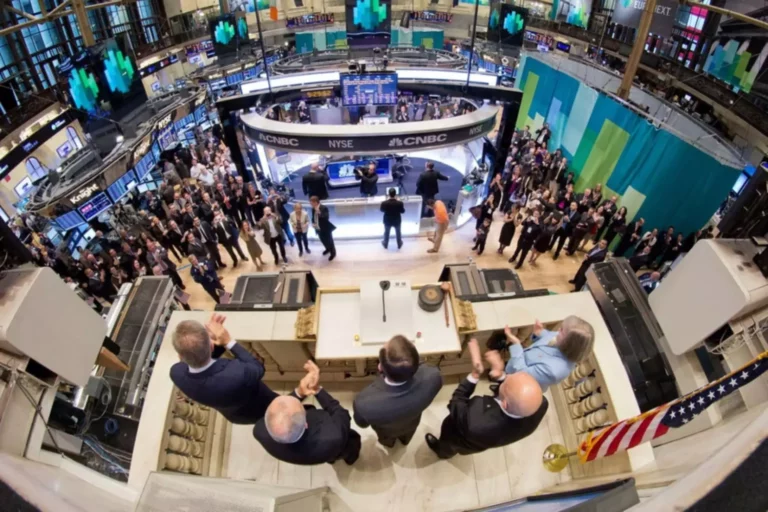Если курс вырос по сравнению с зафиксированным в контракте, продавец выплачивает покупателю разницу. Он хочет защитить себя от колебаний курса и заключает с банком форвардный контракт. Независимо от того, вырос или упал курс, импортер получит от банка валюту по sixty two рубля за доллар США. В России проводятся экономические реформы и либерализация валютного рынка, благодаря чему рубль стал более конвертируемым по сравнению с прошлым.
Что Следует Учитывать Физическим И Юридическим Лицам При Работе С Неконвертируемыми Валютами?
Смарт-контракты — это программируемые соглашения, которые выполняются автоматически при выполнении заранее определенных условий. Это устраняет необходимость ручного вмешательства, повышает эффективность и снижает риск человеческой ошибки. Кроме того, dm Dashmarket предоставляет пользователям доступ к рыночным данным и аналитике в режиме реального времени, что позволяет им принимать обоснованные торговые решения. Платформа также предлагает конкурентоспособные спреды и низкие комиссии, что делает ее привлекательным выбором как для начинающих, так и для опытных трейдеров. Благодаря удобному интерфейсу и расширенным функциям dm Dashmarket прокладывает путь в будущее торговли NDF в криптовалютной индустрии.
Подчеркните Важность Понимания Их Взаимосвязи В Экосистеме Криптовалют
Даже если некоторые валюты официально свободно обращаются на мировых валютных рынках, Токен они могут иметь определенные ограничения, которые фактически делают их неконвертируемыми для практических целей. NDF предоставляют инвесторам возможность торговать с этими странами до тех пор, пока не будет достигнута полная конвертируемость. NDF (беспоставочный форвард) — это производный финансовый инструмент, используемый на валютных рынках.
Они обычно используются на рынках, где контроль или ограничения обмена валюты затрудняют прямую торговлю валютой. Беспоставочный форвард NDF — это финансовый инструмент, который позволяет инвесторам спекулировать на будущем обменном курсе двух валют. NDF обычно используются для валют, которые имеют ограниченную конвертируемость или ограниченную ликвидность на спотовом рынке.
Грамотный подбор условий контракта, повторяющих условия реализации актива на данный момент, позволит трейдеру продать форвард и извлечь из этой сделки стоимость данного базового актива на момент реализации. Впрочем, это задача не для новичка — на бирже форвард продать нельзя, а найти покупателя вне ее сможет не каждый инвестор. Убытки в результате изменения валютного курса на рынке сделок с немедленной поставкой компенсируются прибылью на фьючерсном валютном рынке. Поэтому главная цель таких фьючерсов не столько получение актива, сколько страхование валютного риска.

Беспоставочные форварды, по своей природе, наиболее ценны для рынков, где традиционная торговля валютой ограничена или нецелесообразна. Это создает нишевый, но значительный спрос, позволяющий брокерам извлекать прибыль из спреда между беспоставочным форвардом и преобладающей ставкой спот-рынка. При правильной стратегии управления рисками брокеры могут оптимизировать свою прибыль в этом сегменте. Очень важно отметить, что расчеты по беспоставочным форвардам завершаются расчетом в наличных денежных средствах. Физического обмена условной суммы, представляющей собой номинальную стоимость, не происходит.
- NDF — это финансовый контракт с денежными расчетами, который позволяет инвесторам косвенно получить доступ к неконвертируемым валютам.В контракте NDF не происходит физического обмена в местной валюте.
- Еще одним финансовым инструментом для страхования валютных рисков считается фьючерс.
- В случае понижения курса продавец контракта сможет продать ее по более выгодному курсу.
- Одним из деривативов, часто торгуемых на ZSE, является беспоставочный форвард (NDF).
А главный недостаток заключается в том, что при изменении цены к расчетному дню контрагенты не могут расторгнуть договор. Форвард не предоставляет покупателю и продавцу ту гибкость выбора, которую дают альтернативные производные бумаги. Вторичный форвардный рынок отсутствует, соответственно ликвидность форварда невысока.


NDF позволяют участникам рынка хеджировать или спекулировать на обменном курсе двух валют. В отличие от традиционных форвардных контрактов, NDF рассчитываются наличными и не предполагают физической поставки базовой валюты. Для оффшорных инвесторов, желающих участвовать в торговле с государствами, имеющими неконвертируемую валюту, необходимо использовать финансовый инструмент, известный как беспоставочный форвард (NDF). NDF — это финансовый контракт с денежными расчетами, который позволяет инвесторам косвенно получить доступ к неконвертируемым валютам.В контракте NDF не происходит физического обмена в местной валюте. Вместо этого расчеты по чистым денежным потокам производятся в конвертируемой валюте, как правило, в долларах США.
Неконвертируемая валюта — это национальное законное платежное средство, которое не имеет свободного обращения на мировом валютном рынке. Другими словами, это валюта, которую нельзя легко обменять или обменять на другие иностранные валюты. Этот тип валюты используется в основном для внутренних операций внутри страны и не торгуется открыто на валютном рынке форвардные контракты это (FX). 4) Основное преимущество форвардных контрактов — это фиксация цены на будущую дату. Главный их недостаток — при изменении цен к расчетному дню в любую сторону контрагенты не могут разорвать его. Поставочный форвард исполняется поставкой основного актива и полной оплатой на условиях договора.
Тем не менее, беспоставочные форварды не ограничиваются неликвидными рынками или валютами. Их могут https://www.xcritical.com/ использовать стороны, которые хотят хеджировать или подвергать себя опасности в отношении определенного актива, но не заинтересованы в поставке или получении базового продукта. Беспоставочный форвард (NDF) — это расчетный наличными и обычно краткосрочный форвардный контракт. Две стороны соглашаются принять противоположные стороны сделки за определенную сумму денег — по договорной ставке, в случае валютного NDF.
